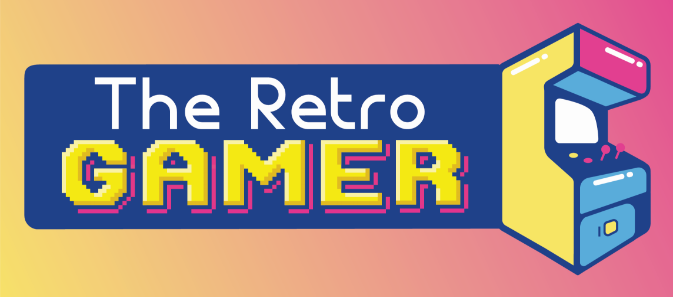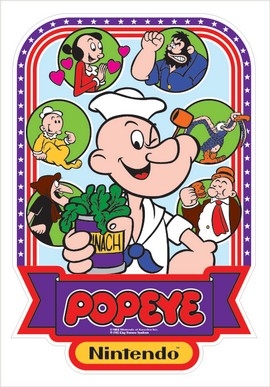
When thinking of the Golden Age of the arcade, it’s hard to picture that world without Nintendo. The iconic blue cab has housed some of America’s favorite games and characters. However, there was a time when Nintendo floundered in the American arcade scene. During the late ’70s and early ’80s, Nintendo struggled to capitalize on several moderately successful games made for the Japanese market. Many were basic design copies of other popular games such as Breakout, Galaxian, and Head On. For most gamers, their first encounter with a cabinet from “The Big N” is the game that took America by storm in 1981, Donkey Kong.
This, however, is not the story of Donkey Kong. This is the story of the game that made Nintendo’s most prolific cabinet possible, Popeye— the sailor man with the corncob pipe, a love for leafy greens, and a rather broad nemesis named Bluto.
My love for Popeye came as a kid pouring through an old VHS collection that had been passed to me from my dad. Fast forward to adulthood, with a newfound passion for arcade hardware, I found a blue Nintendo cab with the simple round side art of the early ‘80s. Full color with a corncob pipe and permanent wink was the sailor himself. I stepped up and got ready to side scroll my way to a cheek kiss from the pixelated Olive Oyl. I was not disappointed. A single-screen platformer, Popeye is similar in many ways to Nintendo’s major success, Donkey Kong— but with its own lovingly crafted sprites and a challenging but interesting objective set.

Those with a passion for Nintendo’s home consoles will know the company’s most prolific designer, Shigeru Miyamoto (Super Mario Bros, Zelda, and Star Fox). Before the creation of these properties, however, Nintendo had a ton of unwanted Radar Scope cabinets they needed to fill. They needed a new property and asked their employees for ideas. Miyamoto, a young artist and designer, had a passion for the theater reels of MGM, namely the Adventures of Popeye. A favorite episode featured a sleepwalking Olive stumbling into an active construction site with Popeye in hot pursuit. He jumps girders, moves equipment, and raises elevators to keep her from harm.
Sound familiar?
Nintendo sought the rights to Popeye’s image from King Features, but with few large-scale commercial successes, their offer was declined. This forced the company to redesign the art and characters. Leaning on other inspirations, Miyamoto kept much of his original level design, creating one of the first narrative game experiences. Ape loves girl, ape takes girl, humble hero attempts to rescue girl, and thus, Donkey Kong was born.

One year later, with Donkey Kong consuming American quarters at an unprecedented rate and Miyamoto now coming into his own as a designer, Nintendo made another offer to King Features. This time Nintendo got it. Splitting his time between a sequel to the wildly popular Donkey Kong and his passion project, Miyamoto released an incredibly original and fun game that again tells a story. Pulling characters and settings from several episodes and the funny papers, it tells the classic tale of the damsel in distress. Popeye helped to propel Nintendo into the American market while cementing its design philosophy for the next decade.
With licensing around Popeye and his pal’s currently spread across several entities and a looming legal battle for broadcasting rights in the UK, it’s unlikely we will ever see an artistic remaster of this game. Next time you’re in Reboot Retrocade & Bar make it a point to play an original cab. Step up and give a tip of the cap to the Sailor Man who inspired the guy that helped save an industry. And always remember your can of spinach. Toot Toot!
